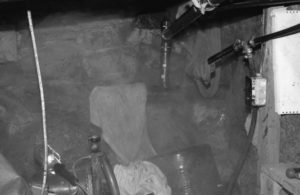 Plumbing leaks are something that many homeowners on Long Island face and can be caused by freezing during the winter. These leaks come about when the frozen water starts to expand instead of contract. When this happens, the water needs more space than it did before which causes the leaks.
Plumbing leaks are something that many homeowners on Long Island face and can be caused by freezing during the winter. These leaks come about when the frozen water starts to expand instead of contract. When this happens, the water needs more space than it did before which causes the leaks.
The enclosed space of the pipe will not be able to hold the expanding water. When the pipe reaches its limit, it will burst and cause a plumbing leak. It is possible that this issue with freezing water can cause a number of leaks around the house which is a large problem that you will want to avoid.
This is why you should be aware of the different ways that you can prevent freezing in your pipes.
These prevention methods are particularly important if you are moving into a new house and are unsure about the state of the pipes. Of course, it is recommended that before you buy a house, you check the plumbing to ensure that preventative measures have been taken. If they have not been, you will need to know what they are, how to implement them and how they can help.
Coating The Pipes With Fiberglass
One of the simplest prevention methods is to coat the pipes in fiberglass. It is easy to find the materials for this in the local department store. If you are looking to reduce the costs of this process, you should look at only insulating the pipes that are out of the way such as those in the crawl space. These are the pipes that will not be exposed to the heat of the house and are more likely to freeze during the cold winter months.
If you are going to use fiberglass, you need to be careful as it can be dangerous particularly if you inhale it. This is why you need to have protective clothing including a mask before you start. If you are nervous about doing this yourself, you can hire a professional plumber to handle the job instead. This provides the additional benefit of ensuring the job is done correctly.
Get A Heat Trace Cable
A heat trace cable is a cable which has been made of metal with a very high heat conductivity rate. These cables are used to spread heat from any part of the house to another. When you run these cables along the pipes in your home, you can easily transfer heat from a warm part of your home to the pipes that do not generally feel this.
Most of these cables are actually very easy to install and it is something that you could do yourself. Of course, if you have a lot of pipes or do not have to time to do this yourself, you should consider hiring a plumber. Hiring a plumber to do this will cost more than doing it yourself, but it could take less time and be more effective in the long-run.
Make Use Of A Space Heater
Many people do not consider using a space heater to avoid freezing pipes. However, if you have an area of the house where most of your plumbing is located, you can use a space heater to ensure that the area is warm. The key to using this method is to ensure that the room is always at a warm temperature so that the water in the pipes cannot completely freeze and cause any damage.
Open Your Cabinet Doors
In most Long Island homes, the plumbing will run behind the cabinets. The problem with this is that the walls might not be properly insulated and this could allow the pipes to freeze. If this is the case in your home, you should open the cabinets to let the heat from the house warm the pipes. It is recommended that you try this method if you are sure that the pipes run through the wall and that the wall is not correctly insulated. If the wall is insulated, this method will not help very much.
Reducing the chance of freezing pipes using these methods is only a temporary solution and should not be considered a permanent fix. Many of these solutions will only help stop the freezing of water in the pipes, but will not reduce freezing completely. It is recommended that you use these solutions in the winter, but look at a more permanent solution during the summer months.
It is recommended that you hire a professional plumber to assess your plumbing during the summer. They will then be able to offer suggestions which will help you protect your plumbing in the winter. Getting a permanent solution in place will be cheaper in the long-run than constantly using temporary solutions of having to deal with the aftermath of freezing and bursting pipes. It will also be more convenient as you will not have to worry about anything.
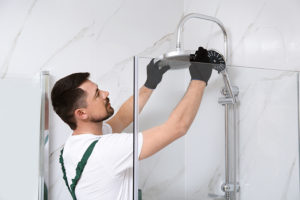 It’s an unpleasant surprise no homeowner wants to face. You’re ready to take a shower to jump-start your morning or treat yourself to a nice, hot bath at the end of a long winter’s day, but you can’t because when you turn the taps, water doesn’t come out. Your pipes have frozen.
It’s an unpleasant surprise no homeowner wants to face. You’re ready to take a shower to jump-start your morning or treat yourself to a nice, hot bath at the end of a long winter’s day, but you can’t because when you turn the taps, water doesn’t come out. Your pipes have frozen.
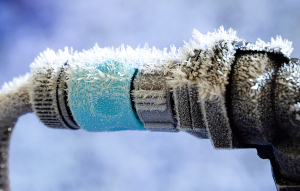
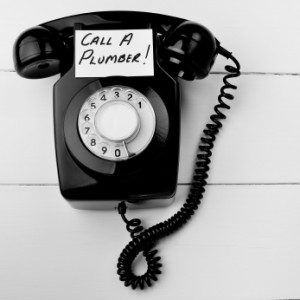
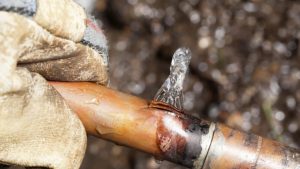 Thawing a frozen water pipe quickly is crucial. However, it is equally important to ensure you thaw a frozen pipe correctly. Here are top tips that will help you get water flowing and help you avert the crisis of a burst pipe or potentially damaging floods in your home.
Thawing a frozen water pipe quickly is crucial. However, it is equally important to ensure you thaw a frozen pipe correctly. Here are top tips that will help you get water flowing and help you avert the crisis of a burst pipe or potentially damaging floods in your home. Mother Nature can wreak havoc on your plumbing system very quickly. When temperatures plummet on Long Island your pipes can become frozen and burst, resulting in serious damage to your home. If your pipes become frozen, you must act quickly to thaw them and prevent your pipes from bursting due to rising pressure within your pipes.
Mother Nature can wreak havoc on your plumbing system very quickly. When temperatures plummet on Long Island your pipes can become frozen and burst, resulting in serious damage to your home. If your pipes become frozen, you must act quickly to thaw them and prevent your pipes from bursting due to rising pressure within your pipes. Plumbing leaks are something that many homeowners on Long Island face and can be caused by freezing during the winter. These leaks come about when the frozen water starts to expand instead of contract. When this happens, the water needs more space than it did before which causes the leaks.
Plumbing leaks are something that many homeowners on Long Island face and can be caused by freezing during the winter. These leaks come about when the frozen water starts to expand instead of contract. When this happens, the water needs more space than it did before which causes the leaks.